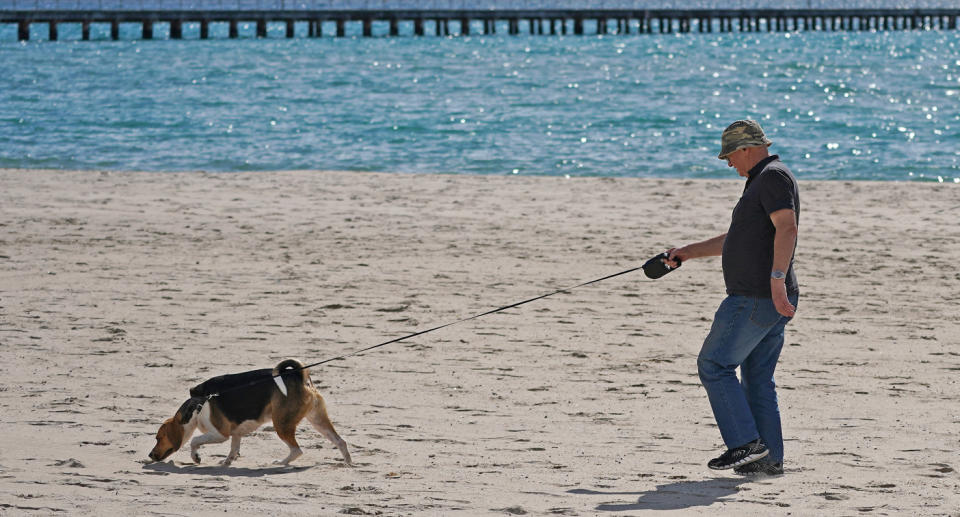The unexpected impact coronavirus may be having on your dog
Among the thousands of Australians to have purchased a dog during the coronavirus pandemic are a host of new pet owners who may be unknowingly doing their furry friend more harm than good.
People making the most of their outdoor freedoms and bringing their dogs along for the journey, could risk putting too much strain on their pet’s body and potentially doing long-term damage.
Particularly for those in Stage 3 restrictions in Victoria, where rules are slightly looser than in Melbourne, dog owners might be tempted to bring their pets with them on every expedition outside the home.
This is not only unnecessary, but possibly setting people up for a headache when they go back to work and in some cases, long-term costs associated with an injured dog, RSPCA chief veterinarian Dr Emma Bronts said.

“When you have a new dog in the household, you have to be mindful that they may not need to be exercised as much as we think they do,” Dr Bronts told Yahoo News Australia.
She said short walks on the lead no longer than an hour a day was enough to fulfil the exercise requirements of most dogs.
“If you do need to get out more, just go for a walk by yourself. Your dog doesn’t always need to go with you.”
Dogs most at risk for doing damage due to being overexercised were young great danes, labradors, German shepherds and other typically bigger breeds.
“If you’ve got a young, growing puppy that’s going to be a large dog when it’s an adult, during their first 18 months to two years we need to be quite mindful of how much exercise they do, and not exercise them too much,” Dr Bronts said.
“They only need gentle lead walking for between 15 and 30 minutes a day. Anything over that can actually affect their growth and cause them quite a lot of pain.”

Dogs in the older age category can also be subject to an overexercising-related injury - some may have pre-existing health conditions, have joint issues, be overweight, or simply don’t want to be exercised.
“We shouldn’t be overexercising them just because we want to be outside and walking around,” Dr Bronts said.
Through overexercise and too much high impact movement, like running and playing fetch, dogs can acquire serious injuries like cruciate ligament ruptures.
“They can also get growing pains, which is where their muscles and their bones are growing at different rates and can cause quite a lot of discomfort and can impact on their growth long-term,” Dr Bronts said.
“Most dogs only need between half an hour and an hour of gentle lead walking a day for their own well-being. Some dogs like kelpies can cope with more, but generally dogs don’t need to get out as much as we sometimes think they do.”
Permanent damage a possibility
In a worse case scenario, an overexercised puppy can be injured so severely that they suffer pain and discomfort for the rest of their life, according to Dr Bronts.
“They can have ongoing muscular skeletal issues if they are overexercised too much when they’re young,” she said.
Dr Bronts emphasised the importance of dog owners developing a routine they know they’ll be able to maintain when they eventually return to their regular working lives.
“If dogs get into the habit of having a lot of exercise, it’s going to be really hard to revert back to a more manageable amount,” she said.
If this isn’t considered by pet owners, they could be opening themselves up to dealing with their pet having anxiety down the track.
Do you have a story tip? Email: newsroomau@yahoonews.com.
You can also follow us on Facebook, Instagram and Twitter and download the Yahoo News app from the App Store or Google Play.



